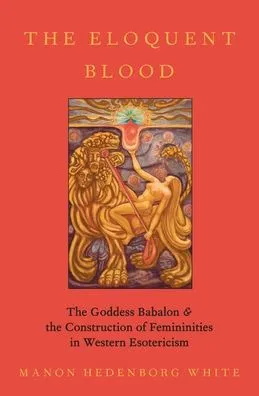This book is brilliant - from this point forward I am unlikely to take anyone seriously who writes on gender in the occult and esoteric communities or on Thelema who doesn't cite her.
Her grasp of the source material is exceptional – substantial, both well-known and obscure works by Aleister Crowley, Jack Parsons, and Kenneth Grant, contemporary writing by practitioners exploring relationships with the Thelemic goddess Babalon, and an impressively fluid and complex use of gender, queer studies, sex radical feminist, and other theory. Her discussion of the growth and development of Babalon’s expression (raising up the ‘whore’ in the whore-virgin dualism, celebrating the strongly sexual, eternally receptive, sometimes violent and transformative potential of the counter to the sexually repressed and puritanical good girl) through contra-hegemonic femininities, the range of oppositional and stigmatized alternative femininities expressed in her worship, the range of influences from sadomasochism, queer sensibilities (beginning with bisexual Crowley), reaction against fundamentalist Christianity, is adept.
With such a complex set of influences, theoretical lenses, and source material the capacity of Hedenborg White to not only keep a clear and effective argument alive but to do so with such muscular and supple prose is impressive. The book is thorough, substantial, but never confusing, and never obscurantist.
So, what is her argument? She is following up an argument by Luce Irigaray on the need and possibility of femininity that is itself, not formed in reference to masculinity, and the need for a goddess that embodies this femininity (or femininities). She sees the active receptivity and pariah femininities in Thelemic work with Babalon as moving toward this goal. She discusses in depth the desire for erotic destruction of the ego in Crowley and in Parsons as an essential element of this process of recreation, and Grant and Parsons’ explicit exaltation of women and the Scarlet Woman (ecstatic priestess of Babalon).
She moves from a thorough discussion of the historical foundation documents to contemporary writing, including in depth exegesis of texts and field work. Her interviews with adepts in Thelema, analysis of ritual texts, and discussion of influences from other contemporary occult movements like neopaganism and the feminist Goddess movement, as well as feminist, gay and lesbian, and trans movements into the Babalon discourse fill out the last part of the book.
My praise of this exceptional work is not completely uncritical. There are two areas where she is weak, one less significant than the other.
For the study of an ecstatic path, such as the path of Babalon, one needs to understand trance and ecstasy as experienced, to participate and be overwhelmed / consumed by direct experience of the goddess. This factor is particularly important given White’s understanding of erotic destruction of and transcendence of the ego as the key to Babalonian consciousness and embodiment. But she does not appear to have engaged in trancework and ecstatic sex magic(k) ritual, as she said in chapter eleven, so this key facet is less well developed than her intellectual understanding.
Less significant, but an area that could have been developed, is exploration of male femininities. She touches on, and is aware of, the range of femininities expressed by trans and cis women of a range of sexual orientations, and effectively, although briefly, explores femme identities and, particularly in dealing with Crowley, receptive male homosexual anal sex as femme. The long-developed traditions of camp and drag in the gay male subculture are male, generally cis male, explorations of femininities. Her discussion of the ‘technologies of femininity’ in chapter eleven’s analysis of ritual brought the practice of drag to mind as transformative.
~review by Samuel Wagar
Author: Manon Hedenborg White
Oxford University Press, 2020

